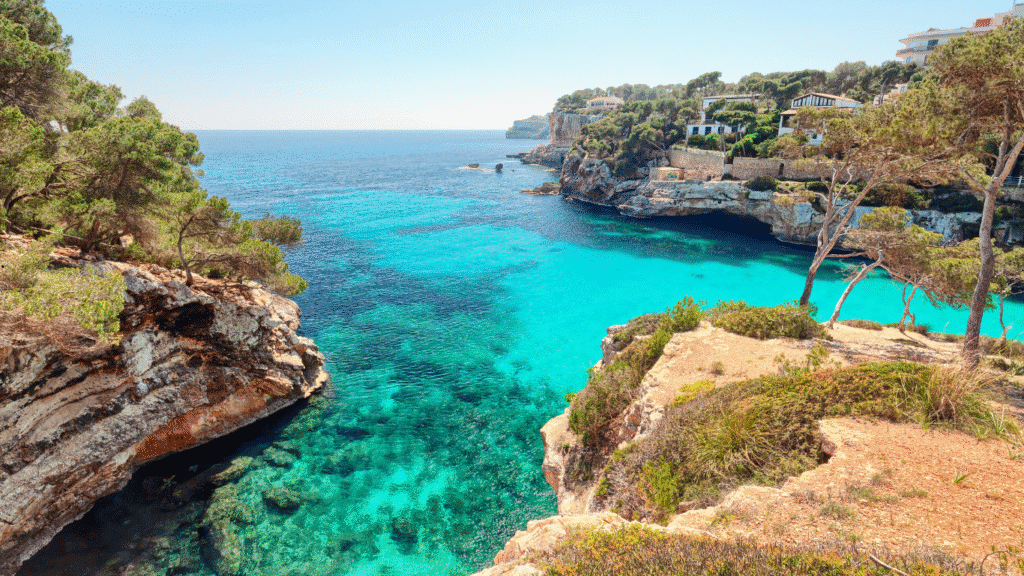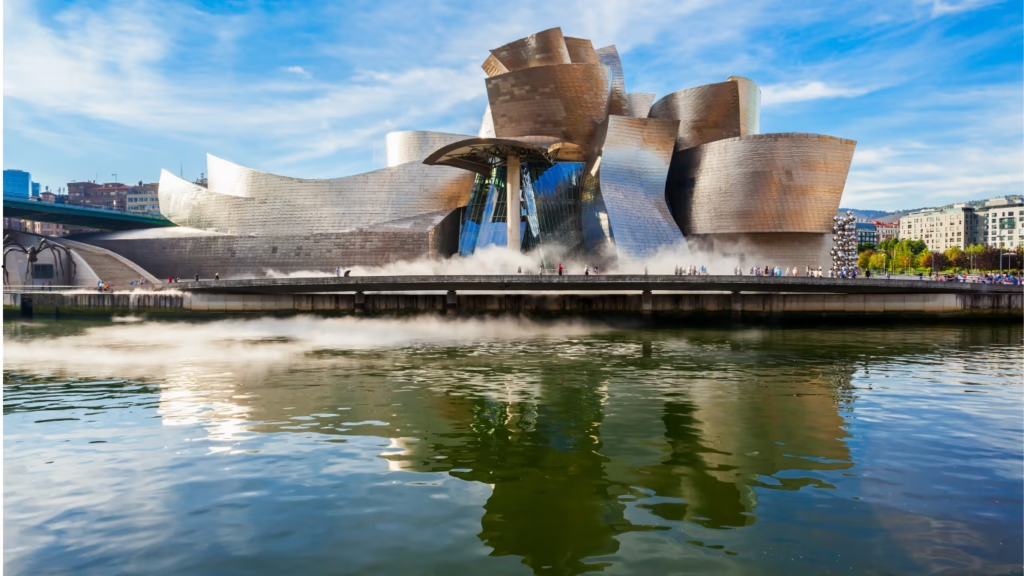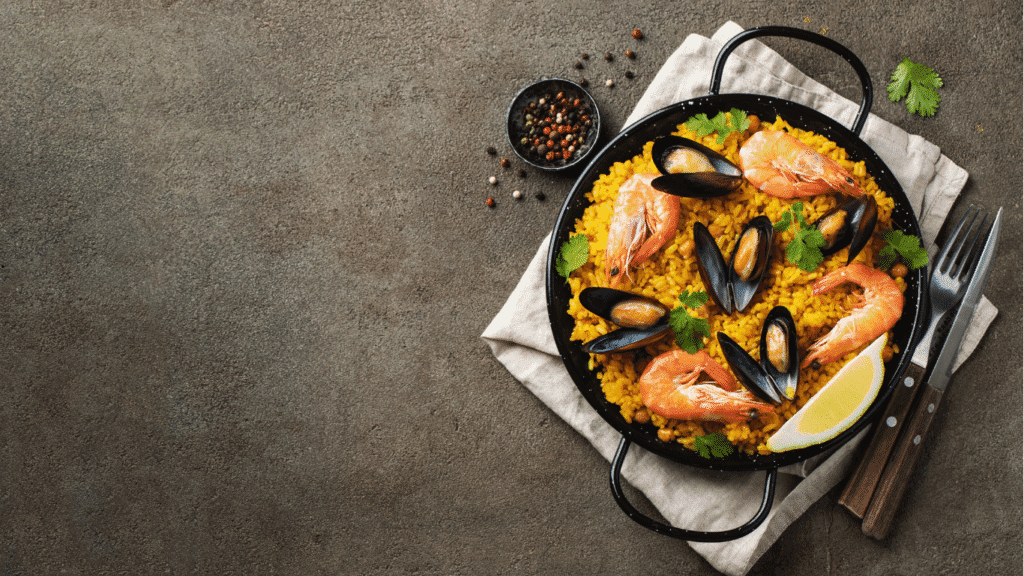Welcome to Spain, a country of vibrant energy, breathtaking landscapes, and an ancient history that whispers from every cobblestone street. Spain is a destination that captivates with its passionate flamenco rhythms, world-class art, and a culinary scene that’s a celebration of life itself. From the sun-drenched beaches of the Mediterranean to the snow-capped peaks of the Pyrenees, Spain offers an unforgettable journey for every type of traveler.

This guide will provide you with all the essential information to plan your perfect Spanish adventure, mirroring the structure and detail of the guides you’ve seen before.
Why Visit Spain?
Spain is more than just a place; it’s an experience. The reasons to visit are as diverse as the country itself:
- A Tapestry of Culture and History: Explore the Moorish palaces of Andalusia, the Roman aqueducts of Segovia, and the medieval cathedrals that dominate city skylines. Spain’s history is a complex and fascinating blend of cultures.
- Architectural Masterpieces: From the whimsical designs of Gaudí in Barcelona to the grandeur of Madrid’s Royal Palace, Spanish architecture is a feast for the eyes.
- Culinary Delights: Embark on a gastronomic journey through the world of tapas, paella, and jamón ibérico. Each region boasts its own unique flavors and culinary traditions.
- Natural Wonders: Spain’s geography is incredibly varied, offering everything from volcanic islands and dramatic coastlines to lush forests and spectacular mountain ranges.
- Festivals and Fiesta: Experience the electric energy of Spanish festivals, from the solemn beauty of Semana Santa to the sheer chaos and fun of La Tomatina.
Best Time to Visit
The best time to visit Spain largely depends on your travel goals.
- Spring (March-May) & Autumn (September-November): These are arguably the ideal seasons to visit. The weather is pleasant and mild across most of the country, perfect for sightseeing and hiking. Crowds are thinner than in summer, and the landscapes are at their most beautiful.
- Summer (June-August): This is peak season, especially along the coasts and islands. Expect hot temperatures and large crowds, but it’s the best time for beach lovers and those who want to experience Spain’s famous nightlife.
- Winter (December-February): While the south remains mild, the north and central parts of Spain can get quite cold. It’s a great time for city breaks with fewer tourists and to enjoy winter sports in the Pyrenees or Sierra Nevada mountains.

Getting Around Spain
Navigating Spain is straightforward, thanks to its modern and efficient transportation network.
- By Train: Spain’s high-speed rail network (AVE) is a fantastic way to travel between major cities like Madrid, Barcelona, and Seville. It’s fast, reliable, and comfortable, offering a scenic journey through the Spanish countryside.
- By Bus: The bus network is extensive and often more affordable than trains, connecting smaller towns and villages that the high-speed rail doesn’t reach.
- By Car: Renting a car gives you the ultimate freedom to explore at your own pace, especially in rural regions and along the scenic coastlines.
- Staying Connected: While traveling, a reliable internet connection is crucial for navigation, translation apps, and staying in touch. The easiest and most affordable way to ensure you have data is to get a CleverLinktoProduct on arrival. This convenient digital SIM card lets you connect to local networks instantly without the hassle of a physical SIM card. It’s a smart way to get online and avoid expensive roaming charges.
Popular Cities and Regions
Madrid: The Heart of Spain
Madrid is a city of energy and elegance. It’s home to the world-renowned Prado Museum, showcasing works by Spanish masters like Velázquez and Goya. Don’t miss a stroll through the vast Plaza Mayor, the beautiful Retiro Park, or the Royal Palace. The nightlife here is legendary, with tapas bars and clubs open well into the morning.
Barcelona: Gaudí’s Masterpiece
Barcelona is a vibrant city on the Mediterranean coast, famous for the unique architecture of Antoni Gaudí. The Sagrada Família, Park Güell, and Casa Batlló are must-sees. Beyond Gaudí, explore the Gothic Quarter, relax on Barceloneta Beach, and get lost in the bustling La Boqueria market.
Andalusia: Soul of Spain
This southern region is the embodiment of classic Spanish romance.
- Seville: The capital, known for its passionate flamenco and the spectacular Plaza de España.
- Granada: Home to the breathtaking Alhambra palace, a masterpiece of Moorish architecture.
- Córdoba: Famous for its stunning Mezquita, a mosque-cathedral that tells a story of multicultural history.
Valencia: City of Arts and Sciences
Valencia is where the future meets the past. Visit the futuristic City of Arts and Sciences, a spectacular architectural complex, and then head to the historic old town. This is also the birthplace of paella, so prepare to indulge.
The Basque Country: Northern Greenery
In the north, the Basque Country offers a different side of Spain with its lush green landscapes and dramatic coastline. San Sebastián is famous for its world-class beaches and pintxos, the Basque version of tapas. Bilbao, once an industrial hub, is now a cultural powerhouse, thanks to the Guggenheim Museum.

The Spanish Islands
- Balearic Islands: Mallorca, Menorca, Ibiza, and Formentera offer a perfect Mediterranean escape. Ibiza is famous for its nightlife, while Mallorca offers a mix of beaches, mountains, and charming villages.
- Canary Islands: Located off the coast of Africa, these volcanic islands offer year-round sunshine and diverse landscapes, from the dunes of Gran Canaria to the volcanic trails of Lanzarote.
Sample Itinerary: Spain in 10 Days
This itinerary is designed for first-time visitors who want to experience a mix of culture, history, and city life.
- Day 1-2: Madrid’s Grandeur
- Day 1: Arrive in Madrid. Settle in and take a walking tour of the historic center. Visit Plaza Mayor and the Royal Palace. In the evening, explore the Gran Vía and enjoy tapas in the La Latina neighborhood.
- Day 2: Spend the morning at the Prado Museum or the Reina Sofía Museum. In the afternoon, relax at Retiro Park. Finish the day with dinner at a traditional restaurant and a flamenco show.
- Day 3-5: The Passion of Andalusia
- Day 3: Take a high-speed train from Madrid to Seville. Check into your hotel and take a leisurely walk through the Santa Cruz neighborhood. Visit the Seville Cathedral and climb the Giralda tower for panoramic views.
- Day 4: Explore the Royal Alcázar palace, a stunning example of Mudéjar architecture. In the evening, enjoy a passionate flamenco performance and authentic Andalusian food.
- Day 5: Travel to Granada. Take a pre-booked tour of the majestic Alhambra palace and the Generalife gardens, a true highlight of any trip to Spain.
- Day 6-9: Barcelona’s Modernismo
- Day 6: Travel by train to Barcelona. Start your exploration at Gaudí’s masterpiece, the Sagrada Família. Walk along Las Ramblas and browse La Boqueria market.
- Day 7: Dedicate the day to Gaudí. Visit Park Güell in the morning and Casa Batlló and Casa Milà in the afternoon. End the day with a stroll through the charming Gothic Quarter.
- Day 8: Take a trip to Montserrat, a stunning mountain monastery with breathtaking views. Alternatively, relax on Barceloneta Beach and enjoy a seafood lunch by the water.
- Day 9: Explore Montjuïc Hill for its museums, gardens, and fantastic views of the city.
- Day 10: Departure
- Enjoy a final Spanish breakfast before heading to Barcelona-El Prat Airport (BCN) for your flight home.
Food and Drink: A Culinary Adventure
- Tapas: The ultimate Spanish social experience. Tapas are small plates of food, perfect for sharing and trying a variety of dishes. Must-tries include patatas bravas, croquetas, and gambas al ajillo.
- Paella: A rice dish from Valencia, traditionally made with rabbit and chicken, though seafood and vegetarian versions are now widely available.
- Jamón Ibérico: Cured ham from black Iberian pigs. It’s a national delicacy and an absolute must-try.
- Churros: A classic Spanish dessert or breakfast. These fried dough pastries are served with a thick hot chocolate for dipping.
- Sangria: A refreshing wine punch with chopped fruit, a perfect drink for a hot day.

Practical Tips for Your Trip
- Currency: The official currency is the Euro (€).
- Language: The official language is Spanish (Castilian), but many regions have their own co-official languages like Catalan in Catalonia and Basque in the Basque Country.
- Connectivity: To stay connected and navigate easily, consider getting a travel eSIM. It provides a simple and secure way to access data without worrying about high roaming charges.
- Tipping: Tipping is not mandatory, but it’s customary to leave a small tip (around 5-10%) in restaurants for good service. For quick service in a bar, tipping is not expected.
- Siesta: In some towns, businesses may close for a few hours in the afternoon. Plan your sightseeing around these closures.
Spain is a country that will steal your heart with its passion, beauty, and incredible energy. Whether you’re an art lover, a foodie, a beach bum, or a history enthusiast, Spain has something to offer everyone. Start planning your trip today and prepare to fall in love with its rhythm, its people, and its soul.

